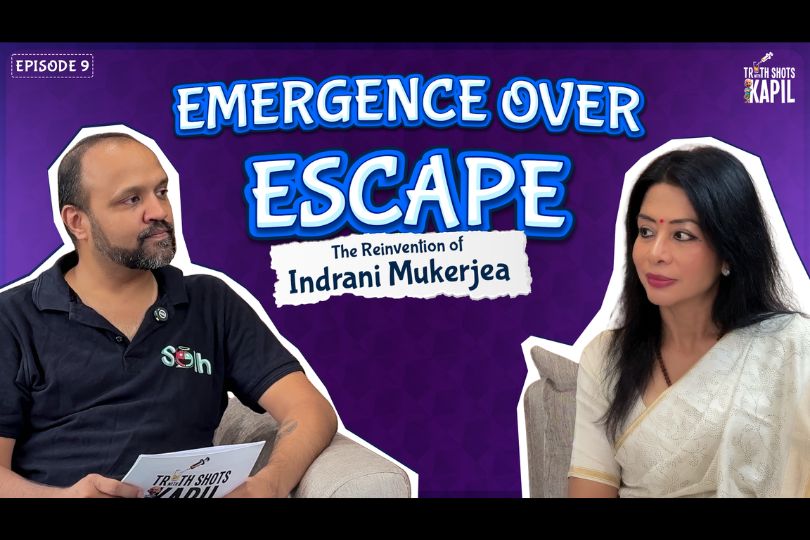3 must-read books from the Women Writer's Prize longlist
on Feb 14, 2022

Seven years prior, SheThePeople coordinated its first Women Writers Fest. Last October, it reported it would be giving out a prize, as well. The waitlist will be declared for this present month, and the triumphant book will be disclosed in March.
Shaili Chopra, organizer, SheThePeople, said the Women's Writers Fest and the Women Writer's Prize offer a dream - to highlight the profundities of works that ladies are composing through lived encounters and carrying an alternate focal point to narrating.
"The exceptional extravagance ladies scholars have brought is something to feature," Chopra said.
The books that came to the longlist cover a wide scope of subjects. There are stories of homicide (A passing in Shonagacchi, Rijula Das), an abrasive story about growing up (A Mirror Made of Rain, Naheed Phiroze Patel), a book about surrender and (Sisterhood of Swans, Selma Carvalho), a mother-girl's excursion through misfortune (The Illuminated, Anindita Ghose), a young lady's unwinding of privileged bits of information (What we Know about her, Krupa Ge) from there, the sky is the limit. In the event that you could read only three books from the longlist, we suggest the ones below: The Begum and the Dastan by Tarana Hussain Khan (Tranquebar)The story of Feroza Begum (name changed) was described to Tarana Khan as a kind of family oral history.
Feroza is seized and held in the collection of mistresses of the Nawab of Shams Ali Khan in 1897, following which her better half is constrained to separate from her. Feroza explores the fabulousness and shamefulness of the array of mistresses after her union with the Nawab.
"The story fascinated me since it should be a wake up call for youngsters," Khan said. "I was struck and moved by the shameful acts she needed to persevere."
Khan added that ladies regularly tumble off the pages of history and one needs to depend on oral history which is only "intergenerational and enthusiastic recollections which fill in the holes".
She, when all is said and done, needed to go through documents, journals, chronicled compositions and obviously, oral history to tell the story. In the book, the Begum's granddaughter recounts the story to her granddaughter, enduring five ages. Not awful at all.The Blind Matriarch by Namita Gokhale (Penguin Viking)
Namita Gokhale is a robust in the scholarly circles, because of her part in the Jaipur Literary Festival. Notwithstanding that she is a productive essayist. The Blind Matriarch is her most recent contribution - it is about a visually impaired authority Matangi-Ma living in a joint family.
This is one of only a handful of exceptional books which showed up last year that wove in the pandemic through the story. Here, the elements of a joint family remained together because of the pandemic is nicely done out. Whenever the matron gets contaminated with the Covid, the family shows astonishing effortlessness.
"The Blind Matriarch was written progressively during the times of the pandemic and the primary lockdown, with the epilog stretching out into the following period of those weird and bewildering days," Gokhale said. "It is basically a novel with regards to the idea of the Indian joint family, with Matangi Ma, the visually impaired authority, holding centerstage."
The Women Who Forgot to Invent Facebook and Other Stories by Nisha Susan (Context)
In the most natural sounding way for her, writer Nisha Susan turned into a grown-up around a similar opportunity the Internet came to India thus, every one of the accounts in this book have something to do with the Internet. A title so lengthy and interesting benefits a discussion with the creator.
"The title story of my assortment is set in Bangalore when the web was somewhat genuinely however web-based media was as yet a flicker later on," she said. "Set in Bangalore in 2018 where a gathering of ladies are dealing with a mystery project in a huge MNC which intently looks like Facebook."
While Susan clubs the entire world and all its opportunity with 'getting on the web', the tales really show the initial 20 years of the advanced India spreading over through the existences of "many, numerous ladies".
Interpretations
The longlist has four interpretations - A Red-necked Green Bird (deciphered from Tamil by G.J.V. Prasad), Baby Doll: Stories (deciphered from Malayalam by Fathima E.V.), Loneliness of Hira Barua (interpreted from Assamese by Ranjita Biswas) and Budhini (interpreted from Malayalam by Sangeetha Sreenivasan). Assuming there's the ideal opportunity for two books in your timetable this week, we suggest these:
Budhini (Penguin Hamish Hamilton)
Budhini Mahajan, 15, was picked to festoon the then Prime Minister Jawaharlal Nehru and put a tikka on his temple when he visited Dhanbad region in 1959. Be that as it may, the young lady was alienated by her town for those stylized signals which were confused as a demonstration of marriage. Writer Sarah Joseph inspires the account of Budhini in her matchless style which has a colossal after among Malayalam perusers.
Nonetheless, the famous story may never have contacted a bigger crowd yet for her girl Sangeetha Sreenivasan. The last option conceded that she was fortunate to have had her mom close by when she started the work. "It's interesting for an interpreter to have such an extravagance," she said.
Sreenivasan had additionally made a trip with her mom to Budhini's town subsequent to having learned, around five years back, that the hero was as yet alive. "My mom got back and revised the closure of her story and I was fortunate to have had the option to go with her and comprehend the way of life." A decent interpretation work, as per Sreenivasan, holds the kind of the first book rather than doing an exacting word-to-word interpretation. "Information on the way of life and its flavor is fundamental," she noted, adding that her mom was exceptionally content with the interpretation.
The Loneliness of Hira Barua (Pan Macmillan India)
Written in Assamese by Arupa Patangia Kaliga, The Loneliness of Hira Barua is an exceptional portrayal of accounts of boldness, misery and give up on 'normal' ladies. The mental fortitude and goal of ladies exploring savagery, injury, desire and family is plainly substantial even through the interpretation by Ranjita Das. Through her deft taking care of, the peruser becomes acquainted with of Hira Barua, a maturing widow residing without anyone else aside from her canine, the penance of a gathering of whores who save 'housewives' from getting attacked by the officers of the attacking armed force and different stories which are similarly punctured with feelings



.jpg)






.jpg)

.jpg)
.jpg)
.jpg)

.jpg)
.jpg)

.jpg)










Sorry! No comment found for this post.